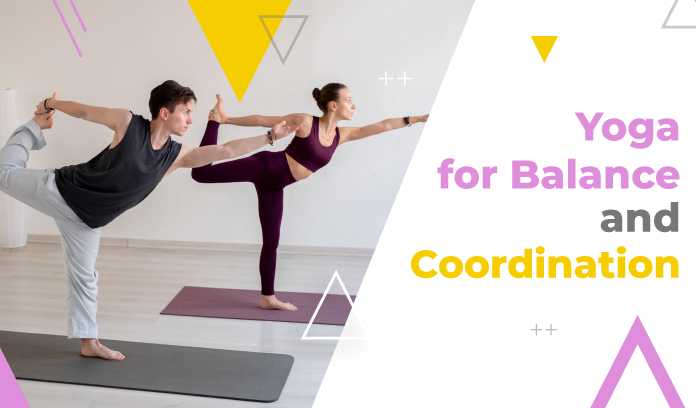In today’s fast-paced world, maintaining balance and coordination is essential for overall health and well-being. While there are many ways to enhance these skills, one effective and holistic approach is through the practice of yoga. In this blog, we’ll delve into the benefits of yoga for balance and coordination, and how you can incorporate it into your fitness routine for maximum effectiveness.
Asanas
Asanas, or yoga poses, are physical postures practised in yoga that help improve balance and coordination by challenging stability and proprioception. Examples include Tree Pose (Vrksasana), Warrior III (Virabhadrasana III), and Eagle Pose (Garudasana).
Pranayama
Pranayama refers to breath control techniques practised in yoga, which can enhance concentration, focus, and mindfulness. Deep breathing techniques, such as diaphragmatic breathing or alternate nostril breathing, can promote relaxation and improve coordination by synchronizing breath with movement.
Core Strengthening
Core strengthening exercises in yoga, such as Plank Pose (Phalakasana) or Boat Pose (Navasana), help stabilize the body’s centre of gravity, enhancing balance and coordination. A strong core provides a solid foundation for movement and prevents falls or injuries.
Standing Balancing Poses
Standing balancing poses in yoga challenge stability and proprioception, improving balance and coordination skills. Practising poses like Tree Pose (Vrksasana), Warrior III (Virabhadrasana III), and Half Moon Pose (Ardha Chandrasana) helps develop strength, focus, and coordination.
Mindfulness Meditation
Mindfulness meditation practices in yoga cultivate present-moment awareness and mental clarity, which can enhance balance and coordination by reducing distractions and improving focus on movement and body alignment.
Eye Focus
Yoga practices often incorporate eye focus techniques, such as Drishti, which involve focusing the gaze on a specific point during balancing poses. This helps improve concentration, steadiness, and coordination by enhancing visual perception and spatial awareness.
Proprioception Training
Proprioception training in yoga involves exercises that challenge the body’s sense of position and movement in space, improving balance and coordination. Poses like Standing Forward Bend (Uttanasana) with eyes closed or One-Legged Balance (Eka Pada Tadasana) enhance proprioceptive awareness.
Flow Sequences
Flow sequences, such as Sun Salutations (Surya Namaskar), involve fluid transitions between poses coordinated with the breath, enhancing balance and coordination through rhythmic movement and mindful transitions between poses.
Gentle Movement Practices
Gentle movement practices in yoga, such as Tai Chi-inspired sequences or Qigong movements, promote fluidity, grace, and coordination by emphasizing slow, deliberate movements coordinated with breath and mindful awareness.
Inversions
Inversions, such as Headstand (Sirsasana) or Shoulder Stand (Sarvangasana), challenge balance and coordination by shifting the body’s centre of gravity and requiring strength, stability, and spatial awareness to maintain proper alignment.
Conclusion
Yoga offers numerous benefits for improving balance and coordination, making it an excellent addition to any fitness routine. By incorporating yoga into your regular practice, you can enhance your physical and mental well-being while cultivating greater body awareness and mindfulness. Remember, consult a medical professional before beginning any new exercise regimen to ensure it’s safe for your individual needs and health status.


